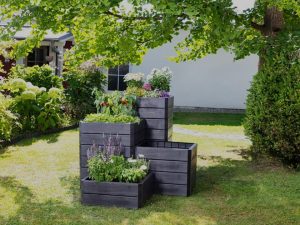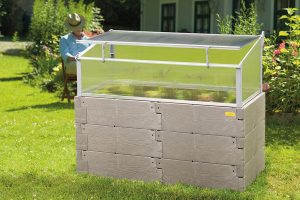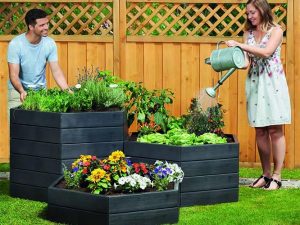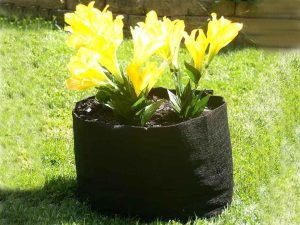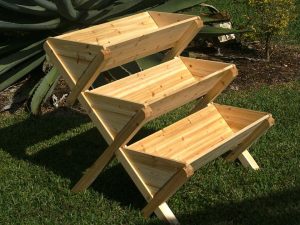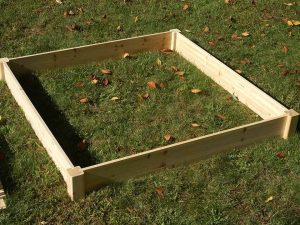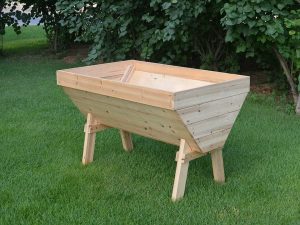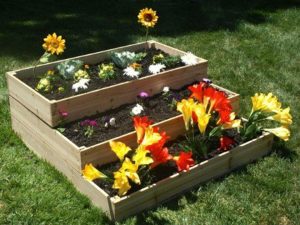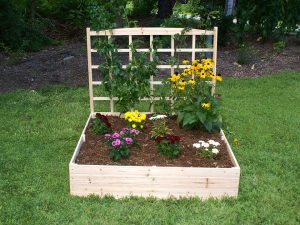-
$74.90 – $419.90
-
Original price was: $249.99.$219.90Current price is: $219.90.
-
$84.90 – $399.90
-
$24.99 – $59.99
-
$98.99 – $461.99
-
$186.99
-
$179.99
These modern raised garden beds are relatively easy to assemble on your own, making them an attractive option for many gardeners. With easy to construct kits and prefabricated, food-grade plastic containers ready, anyone can now have some raised beds to produce their veggies.
Advantages of raised beds
Excellent aeration
Roots need to breathe as well. They breathe in carbon dioxide from the air and expel oxygen. If the soil is compacted, the roots will suffocate and will fail to expand properly. Good aeration is essential for the roots to absorb vital nutrients. It is vital for maintaining the microbial population in the soil.
Good drainage
Raised beds implement good drainage even in heavy rains. It lets excess water to drip away. It keeps the soil equally moist but without letting the water to stagnate.
Root extent
It holds moisture much longer since water loss from the sides is decreased. Plant roots would find it easier to expand and spread in every course when the soil is loosened.
Smaller risk of soil compaction
With water instantly flowing away from raised beds, there is no more risk of soil compaction due to flooding.
Weed control
Raised beds encounter fewer weed problems. Gardeners have the opportunity of filling up the frames with compost and soil. The loosened soil and good accessibility to the beds make it simpler to pull up the few weeds that may appear. An additional ground covering can also help in moisture maintenance, weed prevention, and soil erosion.
Choose the right soil
If you want to grow a variety of vegetables in raised beds, you can fill the garden beds with any soil you want. You have the option of loading up different beds with various kinds of soil to suit the plants you plan to grow in them.
Grow on existing turf
Raised beds can be built right on top of the current grass without digging it up. Your seeds and seedlings can go right on the peak.
Relief from root spread from trees
If you plant near a wooded lot, the nearby trees usually spread their large roots to your well-cultivated veggie spots and feast on the fertile soil. No amount of digging can effectively get rid of this threat. Roots are naturally inclined to spread downwards, your raised beds have a little risk from them.
Excellent pest control
Creepy crawlers see their way into veggie spots by crawling on the soil. A few pests may be prevented by the solid frames that enclose the beds. If nematodes such as a roundworm or threadworm and other soil parasites are a difficulty, you may have enough shield against them by using a plastic liner at the base and sides of the raised bed. A ground covering at the bottom of the raised beds can disappoint the annoying rodents that want to crawl their way into to your raised beds.
Gives extra space
Raised beds give extra space on the sides. Colorful fruits and flowers tumbling over the sides of the beds can give your garden a chic look.
Extend the growing season
Raised beds will thaw much quicker in spring than the frozen soil. You can transplant your veggie seedlings ahead and provide them a good head start.
Higher yield
By using raised beds, a variety of herbs can be planted closer than you would somewhere else. The rich soil with the bigger amount of compost and organic matter from other sources can sustain more plants. This also reduces competition from weeds.
Ideal for mobility challenged growers
Raised beds can be built at any desired height and width so that gardeners who have trouble bending and stretching can have easy passage to plant the bed as well as reaping the vegetables.
Portability
Raised beds offer portability inside the garden without a lot of extra work. The contents and even the plants can be carefully removed too.

